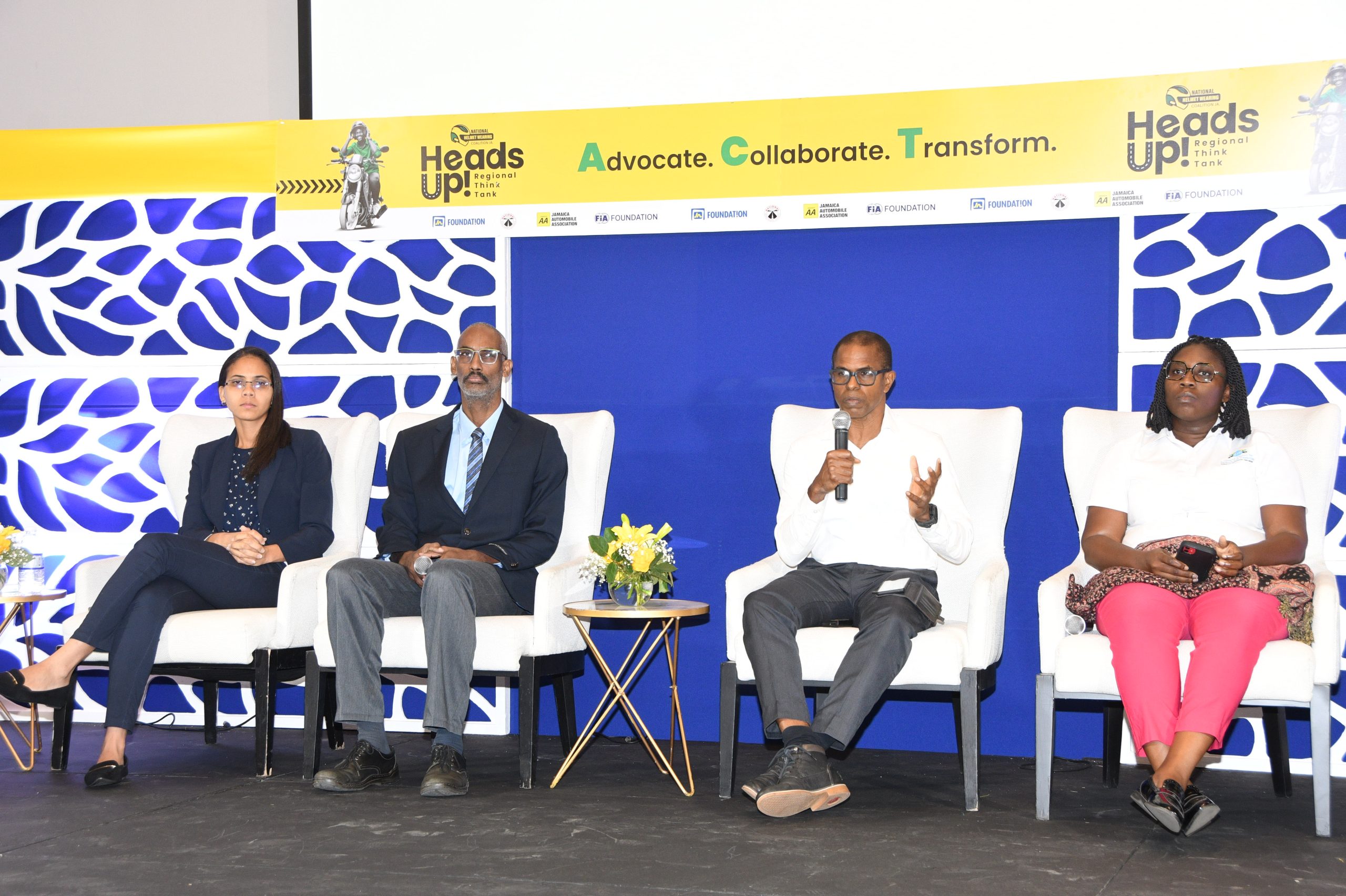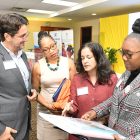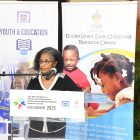Experts Trace the Life-long Pain Young Men Who Survive Motor Bike Crashes Endure
Photo Caption: Dr Rory Dixon (second from right), chief medical officer at Sir John Golding Rehabilitation Centre in St Andrew, makes a point during a panel discussion exploring the social and economic impact of motorcycle crashes at the recent Heads Up! Think Tank organised by the JN Foundation. The event was held at the AC Hotel in New Kingson. Listening (from left to right) as Dr Dixon presents are fellow panellists Yelissa Mendoza Rodriguez, road safety traffic analyst at the National Institute of Traffic and Ground Safety Transportation in the Dominican Republic, Dr Cary Fletcher, orthopaedic surgeon, St Ann’s Bay Hospital and Adrienne Pinnock, manager, public relations at The Jamaica Council for Persons with Disabilities. The panel was chaired by Dr Parris Lyew-Ayee Jr (not pictured), vice president, Private Sector Organisation of Jamaica.
Death is final, but for many who survive motorcycle injuries, the consequences are often a complex chain of interwoven challenges that leave many survivors- many of them young men in their 20s- destitute and dependent on others for the rest of their lives.
It’s a scary existence to fathom, the kind summed up by Shakespeare’s Macbeth as his pending demise becomes apparent to him: “Life’s but a walking shadow… a tale told by an idiot, full of sound and fury, signifying nothing.”
Such was the case made by experts recently at the Heads Up! Regional Think Tank organised by the JN Foundation, as they explored, in graphic detail, the complicated consequential costs of the continued high volume of motorcycle crashes experienced locally and regionally to health care, economies, families, but most of all to the victims themselves, who never get to experience the best of their prime years, because they were not wearing a helmet or protective gear. The event was held at the AC Hotel in New Kingston and streamed via the JN Foundation’s YouTube channel, where it is still available for viewing.
The morbidities- another name for the injuries the thousands of victims of motorcycle crashes live with- are varied and painful, Dr Rory Dixon, outlined. Dr Dixon is the chief medical officer at Sir John Golding Rehabilitation Centre in St Andrew, the only medical facility of its size and kind in Jamaica.
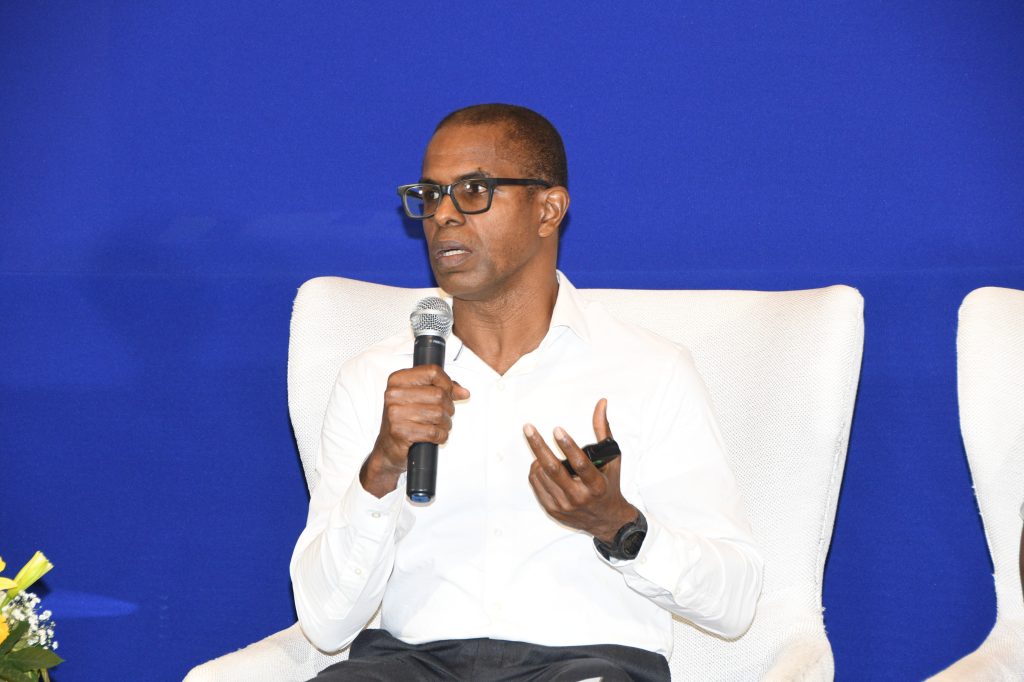
The morbidities seen span spinal cord injuries to amputations of the limbs. And in the final analysis, only 10 per cent of those who survive and are rehabilitated return to earning an income.
“You’re looking at your typical male who is usually working, [he] has a motorcycle accident, and he is out of commission for a long period. You can just see the drain on the family and the community in general,” outlined Dr Dixon.
The journey for most is a litany of agony, exacerbated by long periods of waiting and the development of other medical complications along the cycle. For most, it begins often, Dr Dixon explained, with a wait of about a week for transfer from a Type B or C hospital to a Type A for surgery. And from there, it takes them another one to three months to get into Sir John Golding.
“And that is because the bedspace is very limited. Our capacity has not increased since 1954,” Dr Dixon affirmed of the facility built to respond to the country’s first major outbreak of poliomyelitis. It may soon receive some relief with the addition of a new wing that will house 30 more beds.
Along their rehabilitation journey, many of the young men often develop other conditions beyond their injuries. Ulcerated bed sores are common in just a few days in hospital, especially among those with spinal injuries who are unable to move and possibly feel what should be painful and vulnerable cavities developing on their undersides. In about 60 per cent of admissions, Dr Dixon revealed, the young men develop bed sores, slowing their rehabilitation process, as wound care and possibly, plastic surgery, must be done. They can extend the period of their hospital stay by up to a year.
“Most persons with spinal cord injuries, they have no sensation. For us, we shift ourselves every so often when we sit to take the pressure off our pressure areas, but persons with spinal cord injuries, the skin begins to breakdown within two hours of sustained pressure and unless they are turned every two hours- which this the standard- they end up with these massive ulcers, which complicates their rehabilitation,” Dr Dixon explained.
There are also other complications that develop, such as contracture of the limbs and atrophy (wasting away) of the muscles due to their inactivity, as well as the young men may develop medical problems, such as pneumonia, urinary tract infections and deep vein thrombosis (blood clots). Some even die before they can be rehabilitated.
“Rehabilitation is a multidisciplinary treatment. Persons have to be retrained how to take care of their bowel and bladder,” he explained, and assistive devices are as expensive as they are rare and difficult to tangibly access. As commonplace and as low tech wheelchairs may seem to many, Dr Dixon pointed out that there is no system in place to present patients with one during the rehabilitation process.
As young men in their prime, the chronic debilitation they face can also be psychologically burdensome, as they are unable to earn and even obtain sexual gratification. There is also participate in very little recreation, which later contributes to the development of lifestyle diseases that further complicate and diminish their quality-of-life.
Many are also eventually abandoned by family, Dr Dixon explained. In the beginning, for many, family are present to attend to the needs of the young men, but over time upon recognising the long-term state of their condition, family presence wanes or even disappears.
“So, there is a lot of support initially, and then after the person is admitted [and] they see the impact of what it is going to take long-term, we find that the visits get less frequent, and after a while, when it’s almost time for the person to go back, we hear many things [such as] the caregiver has disappeared or migrated or they’ve lost the house because being the sole breadwinner the [caregiver] was unable to pay the rent. So, this person (patient) ends up being in our care indefinitely,” he explained.
Limited services available in crash hotspots
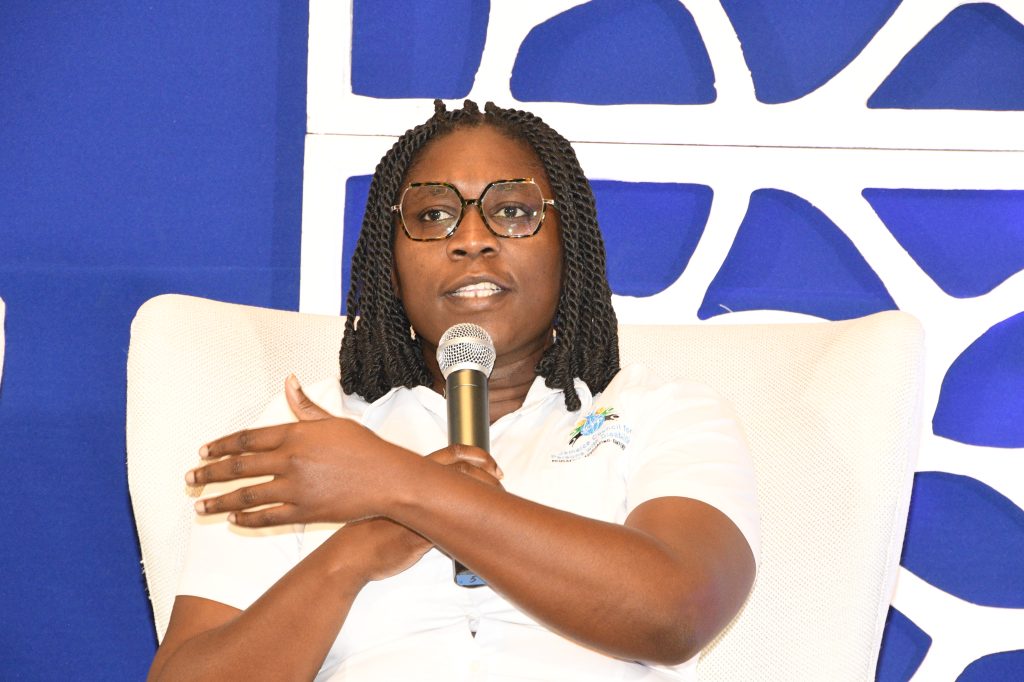
The journey for survivors is even more complex and nihilistic when one considers that services, such as those offered by Sir John Golding Rehabilitation Centre, are not near locales where motorcycle crashes are concentrated, manager for public relations at The Jamaica Council for Persons with Disabilities (JCPD), Adrienne Pinnock, explained. Most crashes and consequently most injuries and deaths occur in Westmoreland, where there is only a Type C hospital- the Savana-la-Mar Public General Hospital.
“The western region of the island records a higher prevalence of accidents; however, the majority of social and rehabilitative services are concentrated in Kingston. The Jamaica Council for Persons with Disabilities also faces significant challenges in reaching individuals in rural areas. This limits the Council’s capacity to effectively support the rehabilitation and reintegration of persons who have acquired disabilities,” she pointed out.
She noted that without the access to supportive social care, severe psychological challenges can creep in, including depression, given not only the new financial and social limitations the newly disabled young men face, but the social stigma attached to persons with disabilities.
“Despite public awareness efforts by the JCPD, stigma surrounding disability remains prevalent. As a result, individuals who acquire a disability and do not receive adequate support may face severe psychological challenges, including thoughts of suicide. These risks are heightened when rehabilitative services are either unavailable or not easily accessible at the critical point of disability onset,” she outlined.
Based on her summary, Ms Pinnock believes health and social services need to better share and use data to identify where the needs for services are.
The crashes could have been prevented
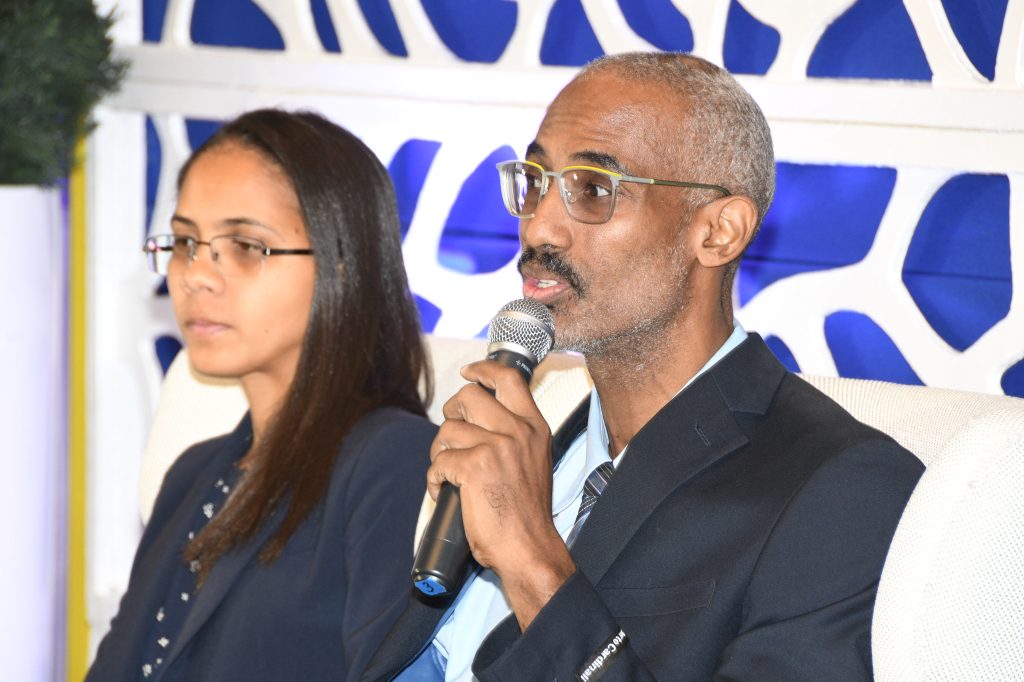
More than 80 per cent of crashes are preventable in the first place, orthopaedic surgeon at the St Ann’s Bay Hospital, Dr Cary Fletcher concludes. In more than half of cases he has seen, the young men were not wearing helmets or protective gear because they were only travelling “for a short distance.” In almost 100 per cent of cases where passengers (pillions) were involved, they wore none at all.
“This has been cited four times and authors in other countries have found the same thing, so I think this is one of the emphases to put in our public education messages. We need targeted messages. So, simply saying ‘helmets save lives’ is not going to be sufficient,” he argued.
Training is also a necessity for motorcyclists he opined, as he pointed out from his own studies done in real time with victims who receive first respondent care at the St Ann’s Bay Hospital, only a quarter of riders had a licence and were insured.
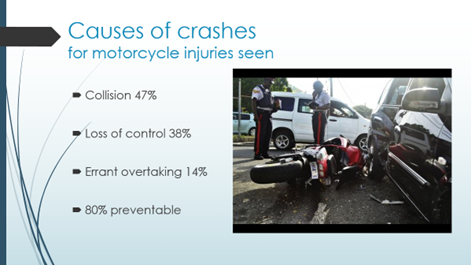
“Those with a licence and insurance had a 57 per cent helmet compliance rate, which was almost double the overall helmet compliance rate of 29 per cent. This suggests that our helmet wearing rates may improve if we get persons to acquire a licence and insurance,” he reasoned.
In 47 per cent of cases, the injuries he saw were due to collisions and 38 per cent of those were because of the young men losing control of the bikes they were riding due to speeding or errant overtaking.
“Had they been formally trained when you look at the [state] of the injury, most of them would not have crashed,” he concluded.

